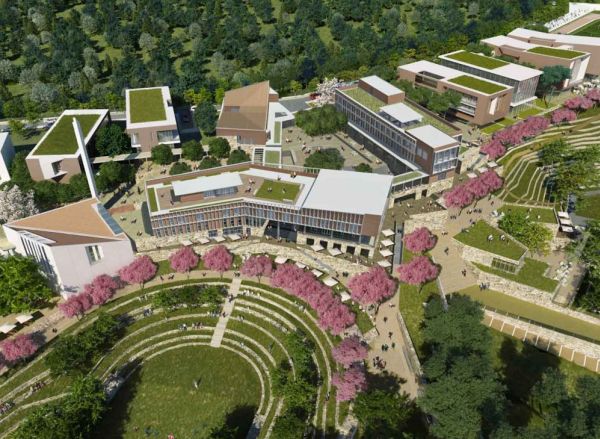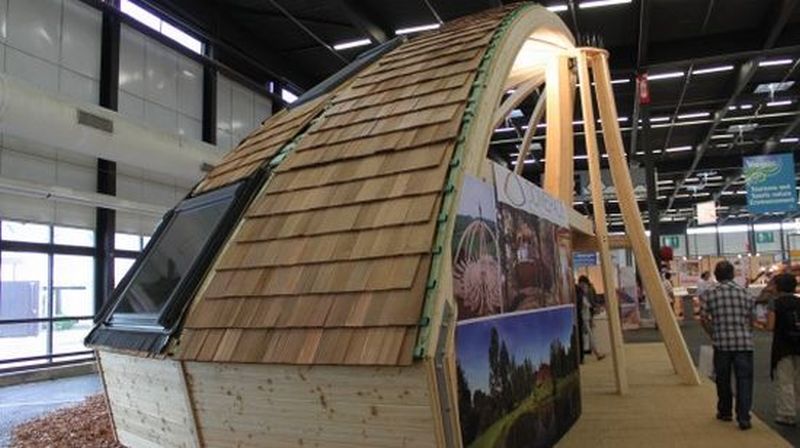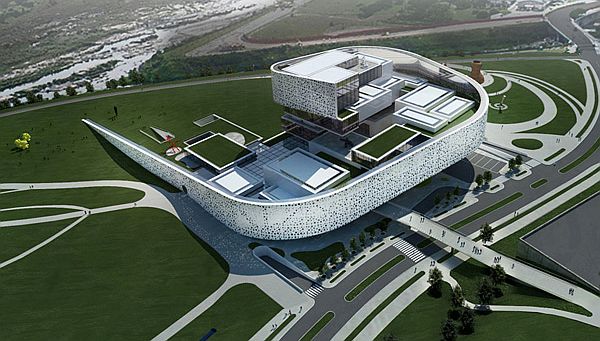The evolution of universities as sites of eco friendly exhibits is fast catching pace. It’s an active transition and a recent example of this is the design of the new campus of Universidad del Isthmo, located on a beautiful hillside near Guatemala City. Sasaki Associates have designed the 49 hectare site and the happy news is that the first phase of the plan is being implemented. The university expects to enroll around 6,200 students within a span of 20 years.

The new campus of the university is designed in answer to its social and educational goals. The ecological forces that influence the area have been thoroughly studied for positioning the building to promote both natural ventilation as well as penetration of enough sunlight during the day.
The central plaza, library and the rectory are the key features planned for the first phase. The remaining campus will spring from these key components. Three main areas, including the academic programs and academic support areas lie within three flexible buildings.
As already stated the first phase refers to the passive development that will draw upon the site’s climatic conditions and other local conditions. Waste conservation is an important and provisions for storing reusing sufficient volumes of storm water. Individual buildings have been integrated with their respective modules that manage and monitor everything from water conservation, production of electricity, etc making each of them sustainably independent.
Not only does the campus aspire to make itself energy efficient, but also wants to take the responsibility of developing strategies that will help in the restoration of the ecological system of the surrounding area. The area has a rich diversity of natural features, including open springs, streams, wetlands, plateaus, etc, therefore as a social responsibility; the project will respond to the preservation the environment demands in the long run.
Via: Archdaily




